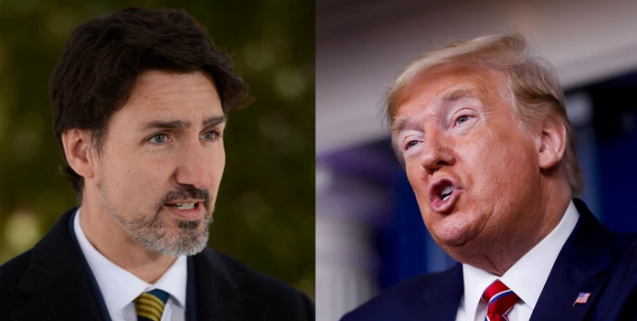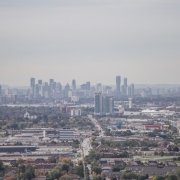Nearly two weeks into an aggressive physical distancing campaign aimed at curbing the spread of the novel coronavirus, cases are doubling at a slower rate in Canada than elsewhere, and hospitals are not yet overwhelmed, public health experts say.
But it’s too soon to tell how well the country will fare.
Because Canada’s COVID-19 situation is about two weeks behind the U.S. and months behind Italy and China, it’s hard to tell how the country will rank globally, said Dr. Barry Pakes, an assistant professor at the University of Toronto’s school of public health.
“What some countries looked like two weeks ago we look like now—maybe a bit better—but we’re still in early stages,” Pakes said.
It takes about three to four days for cases in Canada to double, whereas it only takes about two days in the U.S. and Italy, said Dr. Barry Pakes, an assistant professor at the University of Toronto’s school of public health.
He added that people need to continue aggressive physical distancing, which requires Canadians to stay at home as much as possible and to keep at least 6 feet apart from one other.
By limiting virus spread, public health officials say Canadians can prevent a dramatic spike in new cases overtime—or “flatten the curve”—and decrease the strain on our healthcare system.
Canada’s top medical official, Dr. Theresa Tam, has strengthened the expression, urging Canadians to “plank the curve” instead.
The coronavirus has skyrocketed in Canada, which now has more than 4,000 confirmed or probable cases and 39 deaths. Nearly half of newly diagnosed cases were caused by community transmission, meaning there are no known links to travel or no known source.
The increase in cases is partially a result of Canada’s efforts to ramp up testing. As of Friday morning, the country had administered more than 160,000 COVID-19 tests—an average of 10,000 tests per day.
On Thursday, Tam said that even though we’ve seen an increase in COVID-19 cases, Canada’s hospitals are not yet overwhelmed. About 6 percent of COVID-19 cases require hospitalization and 1 percent of cases have been fatal, she added.
“Anyone unconvinced about the seriousness of COVID-19 and the absolute need for physical distancing need only look to countries like Italy to see the severe impacts of a health system overwhelmed,” Tam said.
According to Pakes, Canada’s fairly strong leadership—both political and scientific—puts the country in a better position than the U.S.
The U.S. now has the highest number of confirmed COVID-19 cases at 70,000, surpassing case counts in China and Italy.
It will likely be the new pandemic epicentre, according to the World Health Organization.
While many states and municipalities in the U.S. are handling the pandemic well, the country lacks a coordinated, streamlined response, Pakes said.
In Canada “we have political leadership that we do in many ways trust,” Pakes said, adding “that’s not necessarily the case in the U.S.”
And even though it’s too early to gauge whether Canada is successfully flattening its curve, Pakes said the country is somewhat lucky that its COVID-19 timeline is behind other countries.
“We can learn from our neighbours to the south that aren’t necessarily doing the right thing,” Pakes said.









 Maziar Moini, Broker of Record - Home Leader Realty Inc.
300 Richmond St. W., #300, Toronto, ON M5V-1X2
Maziar Moini, Broker of Record - Home Leader Realty Inc.
300 Richmond St. W., #300, Toronto, ON M5V-1X2



